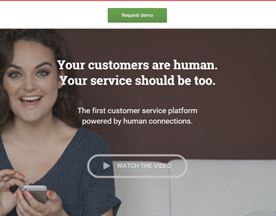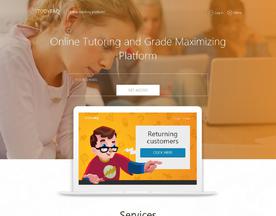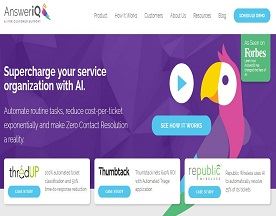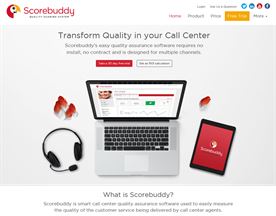We’ve all heard the saying “the customer is always right.” It’s a phrase that has been echoing through the halls of businesses for more than a century. But is it true? Is the customer really always right, or is this a oversimplification of a complex issue?
In today’s competitive business world, customer satisfaction is paramount. Companies bend over backwards to accommodate the whims and wishes of their customers. But this approach can sometimes lead to confusion, frustration, and even a loss of integrity for the business.
Customer interactions shouldn’t revolve around who is right and who is wrong. Happy Customers multiply. Happiness is contagious, so providing excellent customer service and always focusing on the fact that the customer is always right will help multiply your custom. Happy customers are loyal customers. And loyal customers are most likely to stick around and promote your business to others.
In this blog post, I’m going to take you on a journey to explore the origins of this saying, dissect its meaning, and weigh the pros and cons. Together, we’ll discover the right balance between customer satisfaction and business integrity. Provide excellent customer service regardless of “right” or “wrong”.
Subscribing to the mindset that the customer is always right means that businesses shouldn’t spend time questioning the legitimacy of customer complaints . Instead, employees focus their energy on troubleshooting issues, and delighting customers with solutions.
The phrase “Is the Customer Always Right?” encapsulates a business philosophy that prioritizes customer satisfaction. While widely adopted, striking the right balance with this approach is vital.
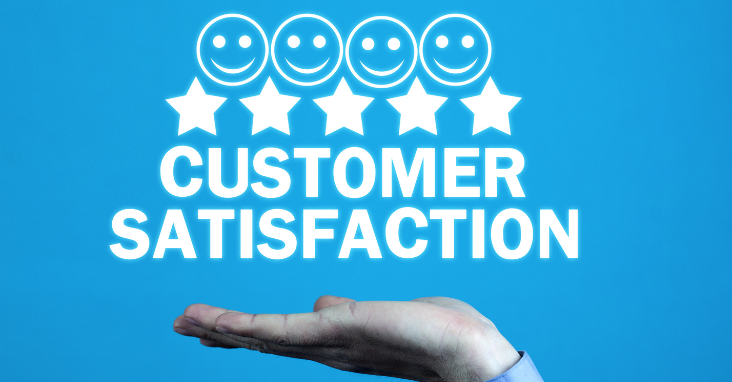
The Origins of the Phrase
Historical Background
The phrase “the customer is always right” is widely attributed to retail pioneers such as Harry Gordon Selfridge, Marshall Field, and John Wanamaker in the early 20th century. They used this motto to guide their customer service philosophy and encourage staff to give the highest priority to customer satisfaction. They believed that business success relied on customer happiness. It was later introduced in the hospitality industry where it became the early standard for customer service.
Shift towards customer-centric approach: During a time when buyer-beware was a common mindset, this phrase symbolized a shift in business philosophy towards a more customer-centric approach. It marked a dramatic departure from previous practices.
Retail revolution: These retail magnates spearheaded a revolution in the way businesses interacted with customers, putting the customer’s needs and desires at the forefront of business operations. having this customer centric ideology was believed to be very positive in the retail sector.
Advertising tool: This motto was not just an internal guide but also used as an advertising tool to attract new customers. It promised an unprecedented level of service and satisfaction, setting these retailers apart from their competition.
Philosophical Implications
The saying has also taken on philosophical implications, reflecting a business ethic that prioritizes the customer’s opinion above all else. This perspective has been both celebrated and criticized.
Democratization of the market: By emphasizing the customer’s perspective, the phrase promotes the idea that consumers have a significant say in the market. It can be seen as a democratization of commerce, where businesses are accountable to the customer.
Potential pitfalls: Critics argue that the phrase can lead to an overemphasis on pleasing customers at all costs, potentially undermining employee rights and business ethics. This has led to a nuanced understanding of the phrase in modern business practice.
Impact on Modern Business Practices
The influence of this saying is still felt in today’s business world, but its application has become more complex.
Modern interpretation: Many businesses interpret the phrase not as a literal truth but as a guiding principle. It underscores the importance of understanding and catering to customer needs while balancing other business considerations.
Global influence: The saying has transcended cultural and national boundaries and is found in various forms around the world. It’s become a universal symbol of good customer service.
Key points:
Coined by early retail pioneers
Shift towards a customer-centric approach
Used as an advertising tool
Philosophical implications, including democratization of commerce and potential pitfalls
Continuing impact on modern business practices, with nuanced interpretation and global influence

The Pros of Believing “The Customer is Always Right”
Enhances Customer Satisfaction
By putting customers first, businesses can improve customer satisfaction and loyalty, leading to increased sales and growth.
Key points:
Boosts customer satisfaction
Increases loyalty and sales
Encourages a Positive Company Culture
This mantra encourages employees to prioritize customer needs, promoting a positive and service-oriented company culture. Successful companies utilize data in order to continuously improve the customer journey from initial contact to ongoing engagement. This customer-centric approach includes sharing customer data and insights, collaborating on customer interactions, and aligning on the overall business culture.
Key points:
Promotes service-oriented culture
Aligns team with customer needs

The Cons of Believing “The Customer is Always Right”
Can Lead to Unreasonable Expectations
Sometimes customers may have unreasonable or unethical demands, and adhering to the mantra can lead to compromised integrity and unfair treatment of employees and other customers. Customers can sometimes have unrealistic expectations about how a product works. These misunderstandings can lead them to become frustrated because they feel like your product isn’t meeting their needs. It’s important to make sure the customer has full knowledge about how a product is intended to operate and how they can make it work for them.
Key points:
Unreasonable expectations
Potential loss of integrity
Impact on Employee Well-being
Putting customers first at all costs can lead to employee dissatisfaction and turnover, impacting the overall well-being of the organization.
Key points:
Employee dissatisfaction
Negative impact on organizational health

Finding the Right Balance
Valuing Both Customers and Employees
It’s essential to find a middle ground that values both customers and employees, creating a harmonious relationship that benefits all parties involved.
Understanding Needs: Both customers and employees have needs and expectations. Businesses must strive to understand these needs and create policies that address them without favoring one over the other.
Communication: Open and honest communication is key. Employees should feel empowered to express concerns, while customers should be kept informed about policies and expectations.
Training: Employees must be trained to handle challenging situations with customers while maintaining professionalism and empathy.
Setting Boundaries and Expectations
A balanced approach also means setting clear boundaries and managing expectations on both sides.
Clear Policies: Having clear and transparent policies helps prevent misunderstandings and guides both customers and employees on what is acceptable. Ultimately, being transparent about why your store policies and procedures exist can help manage customer expectations and lead to an overall better customer experience.
Flexibility with Integrity: While being flexible to customer needs, businesses should not compromise their integrity or values. It’s about finding a solution that satisfies the customer without undermining the business’s core principles.
Managing Expectations: By being transparent about what can and cannot be done, businesses can manage customer expectations and prevent dissatisfaction.
Using Technology to Enhance Relationships
Modern technology offers tools to help businesses find the right balance between satisfying customers and maintaining business integrity.
Customer Relationship Management (CRM): Utilizing CRM tools allows for better tracking and understanding of customer needs and preferences, enabling more personalized and balanced service.
Feedback Systems: Encouraging and analyzing customer and employee feedback can provide insights into areas that need improvement or adjustment.
Social Media Engagement: Engaging with customers on social media allows businesses to build relationships, manage expectations, and respond to concerns in a more personal and immediate way.
Real-life Examples of Finding Balance
There are businesses that have successfully found the balance between keeping customers happy and standing firm on principles.
Nordstrom’s Return Policy: Famous for its customer-friendly return policy, Nordstrom also ensures that this policy is not abused and maintains a profitable business model.
Southwest Airlines’ Transparency: Southwest has been recognized for clear communication and fair policies, creating trust among customers while protecting its business interests.
Key points:
Valuing both customers and employees through understanding, communication, and training
Setting boundaries with clear policies, flexibility, and managing expectations
Utilizing technology like CRM tools, feedback systems, and social media engagement
Real-life examples like Nordstrom and Southwest Airlines showcase how to find the right balance between customer satisfaction and business integrity.

Software Tools for Customer Relationship Management (CRM)
Customer Relationship Management (CRM) tools are essential in modern business to find the right balance between customer satisfaction and efficient management. These tools offer features that help in various aspects of customer engagement, insights, marketing, and service.
Salesforce
Why it’s useful: Salesforce is a robust CRM tool known for its flexibility and scalability. It caters to businesses of all sizes, providing customized solutions for sales, marketing, service, and more.
Key Features:
Lead and Opportunity Management
Sales Forecasting
Marketing Automation
Customer Service Management
Analytics and Reporting
Zendesk
Why it’s useful: Zendesk is famous for its customer service orientation. It simplifies customer interaction across various channels like email, chat, phone, and social media.
Key Features:
Ticketing System
Multi-channel Support
Self-service Options
Customer Analytics
Automation and AI Features
HubSpot
Why it’s useful: HubSpot offers an all-in-one platform that brings together marketing, sales, and service. It’s known for its user-friendly interface and comprehensive suite of tools.
Key Features:
Inbound Marketing Tools
Sales Pipeline Management
Customer Service Hub
Marketing Automation
Integration with Other Tools
Freshdesk
Why it’s useful: Freshdesk is a customer support software providing streamlined customer conversations. It allows the organization to track, prioritize, assign, and automate support tasks.
Key Features:
Omni-channel Customer Support
Ticket Routing
Knowledge Base
Automation and Bots
Reporting and Analytics
Microsoft Dynamics 365
Why it’s useful: Microsoft Dynamics 365 is an enterprise solution that integrates CRM and ERP capabilities. It offers extensive customization and integration with other Microsoft products.
Key Features:
Sales Insights and Automation
Marketing Personalization
Customer Service Solutions
AI-driven Insights
Integration with Office 365
Key points:
Salesforce: Comprehensive and scalable for all business sizes, offering extensive features from sales to analytics.
Zendesk: Specialized in customer service with features like ticketing and multi-channel support.
HubSpot: All-in-one platform that combines marketing, sales, and service with a user-friendly interface.
Freshdesk: Focuses on streamlined customer support with features like ticket routing and knowledge base.
Microsoft Dynamics 365: Enterprise solution integrating CRM and ERP with extensive customization and integration capabilities.
Choosing the right CRM tool depends on the specific needs and goals of your business. These platforms offer a wide array of features to help you connect with your customers, streamline processes, and build stronger, more balanced relationships.

FAQs
Is the phrase “the customer is always right” still relevant today?
Yes, but it needs to be interpreted with nuance and balance.
How can businesses balance customer needs and employee well-being?
By fostering a culture that values both customers and employees, setting clear expectations, and using effective communication.
What are some CRM tools that can help in managing customer relationships?
Salesforce, Zendesk, and HubSpot are some popular tools.
Can prioritizing customers lead to employee dissatisfaction?
Yes, if done excessively and without consideration for employees.
How can a company maintain integrity while keeping customers happy?
By setting clear policies, being transparent, and finding common ground.
Should businesses always give in to customer demands?
No, a balanced approach that considers both customer and business needs is essential.
What are the benefits of a customer-centric approach?
Increased loyalty, satisfaction, and potentially greater profits.
How can businesses avoid unrealistic customer expectations?
By setting clear policies, managing expectations, and communicating effectively.
How do I know if my business is too focused on customers at the expense of employees?
Look for signs of employee dissatisfaction, turnover, or negative impact on organizational health.
What are the potential consequences of ignoring customer needs?
Loss of trust, loyalty, and potentially a decrease in business.

Conclusion
The concept of “the customer is always right” is not black and white. While prioritizing customer satisfaction is vital, an unwavering commitment to this mantra can lead to problems within the organization. The key lies in finding a balanced approach, where the needs and values of both customers and employees are respected.
As we’ve seen, it’s not about always saying yes to the customer but rather understanding their needs and finding common ground. By embracing a nuanced approach, businesses can build loyal customer bases without sacrificing integrity or employee well-being.
Balance between customer satisfaction and business integrity is key to success. Collaboration, empathy, and understanding create a win-win scenario.





